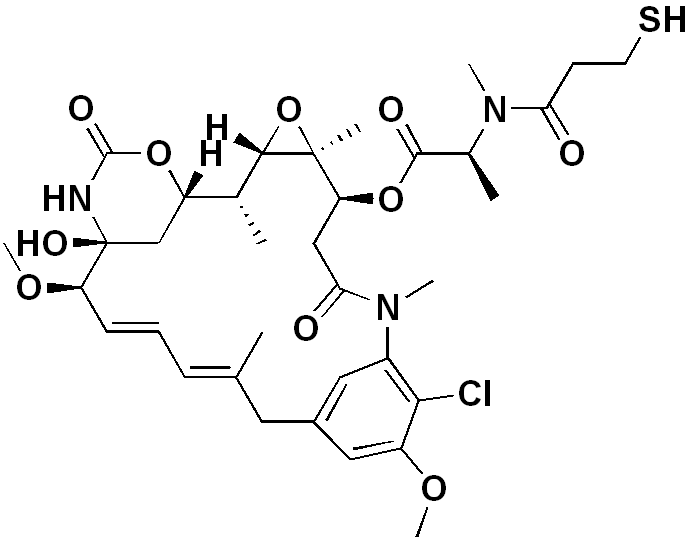Mertansine
| Code | Size | Price |
|---|
| TAR-T1992-50mg | 50mg | Enquire | |||||||||||||||||||||||||||||||||||||||||||||||||||||||||||||||||||||||||||||||||||||||||||||||||
| Special offer! Add £1 to your order to get a TargetMol CCK-8 Kit. Read more here. | |||||||||||||||||||||||||||||||||||||||||||||||||||||||||||||||||||||||||||||||||||||||||||||||||||
Quantity:
| TAR-T1992-2mg | 2mg | £102.00 | |||||||||||||||||||||||||||||||||||||||||||||||||||||||||||||||||||||||||||||||||||||||||||||||||
| Special offer! Add £1 to your order to get a TargetMol CCK-8 Kit. Read more here. | |||||||||||||||||||||||||||||||||||||||||||||||||||||||||||||||||||||||||||||||||||||||||||||||||||
Quantity:
| TAR-T1992-5mg | 5mg | £122.00 | |||||||||||||||||||||||||||||||||||||||||||||||||||||||||||||||||||||||||||||||||||||||||||||||||
| Special offer! Add £1 to your order to get a TargetMol CCK-8 Kit. Read more here. | |||||||||||||||||||||||||||||||||||||||||||||||||||||||||||||||||||||||||||||||||||||||||||||||||||
Quantity:
| TAR-T1992-10mg | 10mg | £149.00 | |||||||||||||||||||||||||||||||||||||||||||||||||||||||||||||||||||||||||||||||||||||||||||||||||
| Special offer! Add £1 to your order to get a TargetMol CCK-8 Kit. Read more here. | |||||||||||||||||||||||||||||||||||||||||||||||||||||||||||||||||||||||||||||||||||||||||||||||||||
Quantity:
| TAR-T1992-25mg | 25mg | £197.00 | |||||||||||||||||||||||||||||||||||||||||||||||||||||||||||||||||||||||||||||||||||||||||||||||||
| Special offer! Add £1 to your order to get a TargetMol CCK-8 Kit. Read more here. | |||||||||||||||||||||||||||||||||||||||||||||||||||||||||||||||||||||||||||||||||||||||||||||||||||
Quantity:
Prices exclude any Taxes / VAT
Overview
Regulatory Status: RUO
Shipping:
cool pack
Storage:
-20℃
Images
Documents
Further Information
Bioactivity:
Mertansine refers to the thiol-containing maytansinoid, DM1 (N2'-deacetyl-N2'-(3-mercapto-1-oxopropyl)maytansine) attached to a monoclonal antibody through reaction of the thiol group with the SPP (N-succinimidyl 4-(2-pyridyldithio)) linker to create an antibody-drug conjugate or ADC. Experimental ADCs with the SPP-DM1 design include lorvotuzumab mertansine.
Biological Applications:
DM1 is primarily used as the cytotoxic component in Antibody-Drug Conjugates (ADCs). ADCs generally consist of three parts: a monoclonal antibody drug targeting specific antigens, a cytotoxic drug and a linker connecting the antibody and the cytotoxic agents ("Payload"). The antibody locates tumor cells, and the linker allows the antibody to carry the cytotoxic agents into the tumor cells. The toxic small molecule typically disrupts DNA, microtubule proteins, etc., thereby preventing tumor cell division and killing the cells. DM1 is precisely such a toxic small molecule.
CAS:
139504-50-0
Description:
Mertansine refers to the thiol-containing maytansinoid, DM1 (N2'-deacetyl-N2'-(3-mercapto-1-oxopropyl)maytansine) attached to a monoclonal antibody through reaction of the thiol group with the SPP (N-succinimidyl 4-(2-pyridyldithio)) linker to create an antibody-drug conjugate or ADC. Experimental ADCs with the SPP-DM1 design include lorvotuzumab mertansine.
Formula:
C35H48ClN3O10S
Mechanism of Action:
DM1 disrupts microtubules in rapidly dividing cancer cells, thereby interfering with chromosome segregation during mitosis. This interruption halts the cell cycle at the M phase, leading to apoptosis in cancer cells and exerting an anti-tumor effect.
Molecular Weight:
738.29
Pathway:
Cytoskeletal Signaling
Purity:
0.9976
Research Area:
HPAC (Human Pancreatic Cancer); PDAC (Pancreatic ductal adenocarcinoma); NSCLC (Non-small-cell lung cancer); CRC (Colorectal Cancer)
SMILES:
CO[C@@H]1C=C/C=C(C)Cc2cc(OC)c(Cl)c(c2)N(C)C(=O)C[C@H](OC(=O)[C@H](C)N(C)C(=O)CCS)[C@]2(C)O[C@H]2[C@H](C)[C@@H]2C[C@@]1(O)NC(=O)O2
Target:
Microtubule Associated
References
1. Whiteman KR, et al. MAbs. 2014 Mar-Apr;6(2): 556-66.
2. Wang Y Q, Ji M Y, Wang C. Endoplasmic reticulum-targeted glutathione and pH dual responsive vitamin lipid nanovesicles for tocopheryl DM1 delivery and cancer therapy[J]. International Journal of Pharmaceutics. 2020: 119331.



